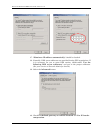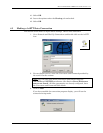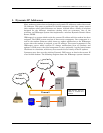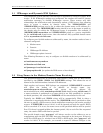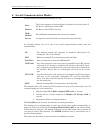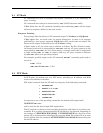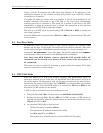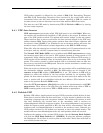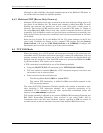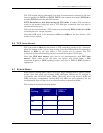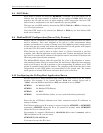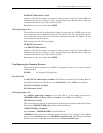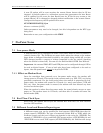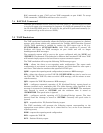
Raven and PinPoint CDMA User Guide Version 1.12
AirLink Communications, Inc. Page 30 March 24, 2004
Using a private IP insulates the PPP client from changes in IP addresses of the
underlying network, as the AirLink modem will perform basic NAT-like address
translation on all packets.
If a public IP address is being used, any changes in the IP (as determined by the
wireless network) will result in the PPP link to the host being disconnected,
requiring the host to reinitiate it. The public IP is passed to the host in the PPP
negotiations, so when the network forces a change, the modem has to force the host
to renegotiate the PPP link to make this happen.
The host can exit PPP mode by deactivating DTR (if S211=0 or &D2) or issuing the
+++ escape sequence.
Note that DTR needs to be asserted (or S211=1 or &D0) by the host before PPP mode
can be entered.
6.3 PassThru Mode
In PassThru mode, all serial traffic is sent directly between the internal OEM
Module and the host. In this mode, the modem does not behave normally. This mode
can be used to configure OEM Module-specific settings (e.g., for provisioning, etc.)
Issuing the “AT\APASSTHRU” enters this mode. The modem responds with CONNECT,
at which point a direct connection to the OEM Module is established.
Note that some OEM Modules requires upwards of 20 seconds before AT
commands can be entered, so be patient if there seems to be no response to
AT commands.
This mode can only be exited by resetting or power-cycling the modem. This mode
cannot be entered via a telnet session.
6.4 UDP PAD Mode
When the modem is in UDP PAD (Packet Assembly and Disassembly) Mode, all
characters received on the serial port are assembled into UDP packets and sent to
the mode’s remote IP address/port, and any packets received from the same IP/port-
destined for the modem’s Device Port (see *DPORT)--are disassembled and dumped
onto the serial line. Note that DTR needs to be asserted (or S211=1 or &D0) by the
host before a UDP session can be entered.
A UDP session is initiated by one of the following events:
• Using the Dial UDP (DP) AT command (as in ATDP192.168.3.23/3456)
• Setting the Startup Mode Default (MD) to 3 (UDP) so that a UDP session is
entered automatically when the modem powers up. Serial data will be sent to the
IP/port specified in S53.
• An incoming UDP packet is received and
- UDP auto answer is enabled (S82=2)
- The destination IP address matches that in S53
- Or allow any IP is set (AIP=1)
- The modem is in AT mode [not in a current UDP or TCP session]



